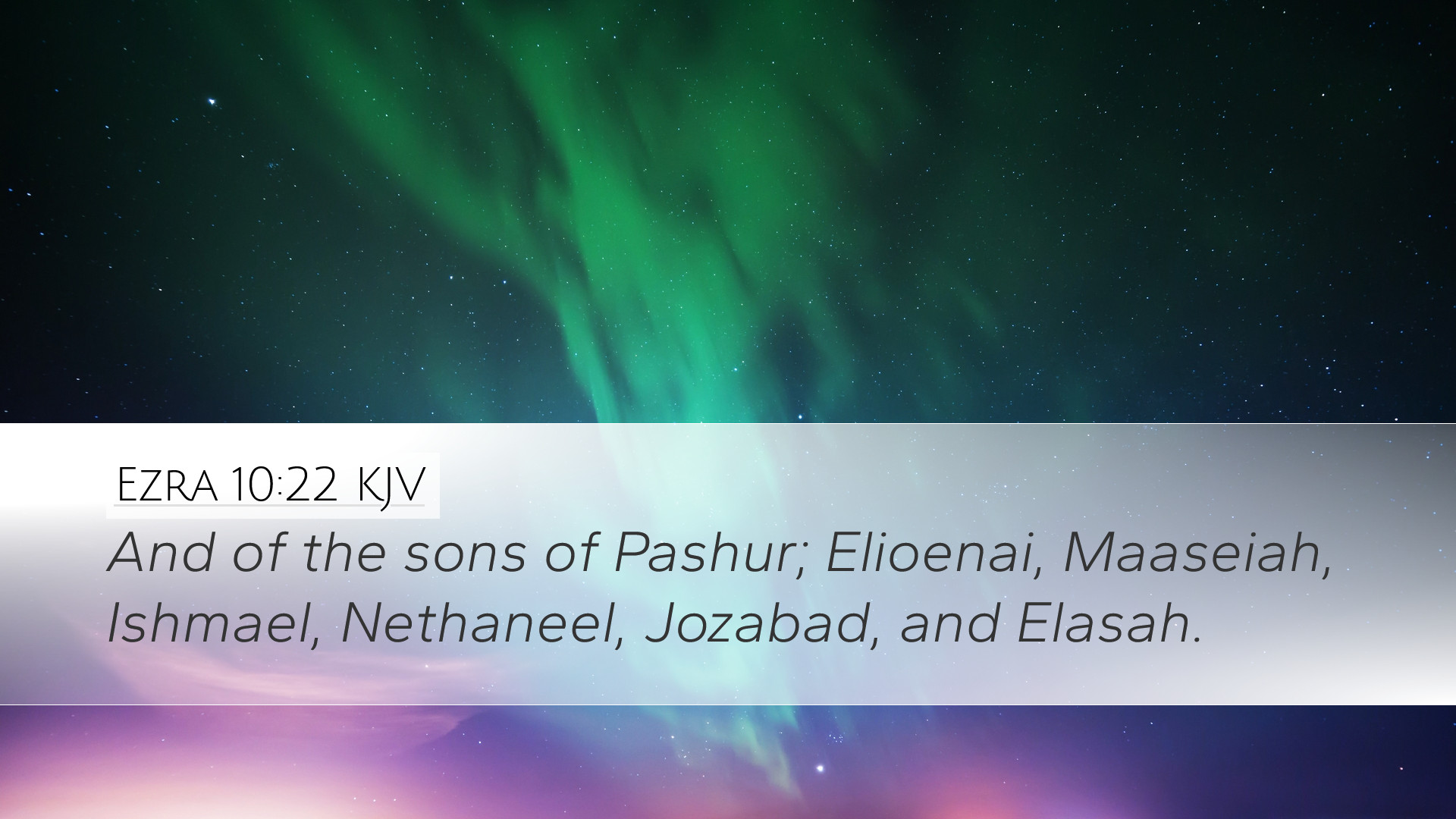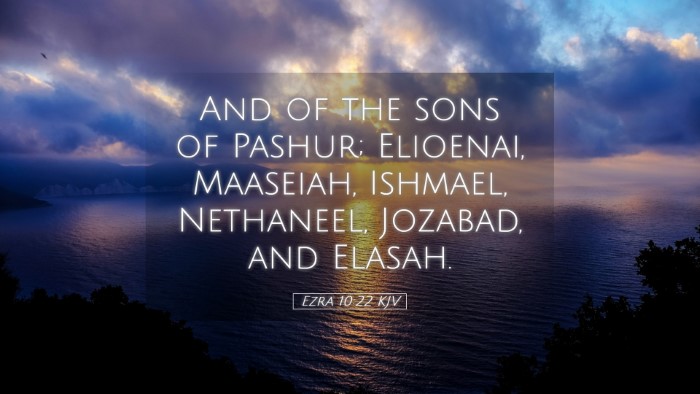Commentary on Ezra 10:22
Ezra 10:22 presents a significant yet often overlooked aspect of the post-exilic community’s faithfulness to God. The verse states:
"And of the sons of Pahath-moab; Adonijah the son of Jeshua, and Jonan the son of Jedaiah, and Eliah the son of Zerahiah."
Contextual Background
Ezra was a priest and scribe who led a group of exiles back to Jerusalem after the Babylonian captivity. His primary mission was to restore the worship practices of the Israelites and to re-establish the community under the Law. This specific chapter deals with the issue of intermarriage with foreign peoples, which prompted a communal repentance and a call for separation from these unions.
Insights from Public Domain Commentaries
Matthew Henry's Commentary
Matthew Henry emphasizes the gravity of the situation faced by Ezra and the returning exiles. He points to the theme of purity in worship that was essential for the restoration of Israel's identity. Henry notes:
- Repentance and Confession: Ezra’s actions were driven by deep concern for the integrity of the covenant community. It is crucial for pastors and leaders to address sin within the community openly.
- Separation from Sin: The call to make sacrifices and separate from foreign wives symbolizes a broader principle of holiness. As Henry articulates, this separation was necessary to maintain Israel's unique relationship with God.
Albert Barnes' Notes on the Bible
Albert Barnes provides a detailed exploration of the individuals mentioned in this verse. He contextualizes their roles within the larger narrative of Ezra's reforms.
- Leadership and Representation: Barnes highlights that the leaders mentioned, like Adonijah and Jonan, represent the larger body of Israel. Their willingness to stand for the Law is indicative of a community that takes ownership of its spiritual responsibilities.
- Importance of Names: The mention of names serves to highlight the significance of each individual's contribution to the restoration process. Names, in biblical literature, often carry deeper meanings and denote identity and purpose.
Adam Clarke's Commentary
Adam Clarke offers a thorough analysis of the political and religious implications surrounding the marriages and the men's response to Ezra's call for repentance.
- Historical Context: Clarke stresses the historical context of these marriages and the risks involved in their discontinuation. Such actions were not merely personal choices but had communal ramifications that could impact the entire nation.
- Divine Judgment: Clarke emphasizes the theme of divine judgment as a motivator for the actions taken by these men. The fear of God’s judgment was a powerful force that pushed the exiles toward a return to covenant fidelity.
Theological Implications
The verse encapsulates various theological themes that are vital for church leadership and engagement in contemporary discussions.
- Community Accountability: It underlines the necessity for accountability within the body of Christ, where leaders step forward to rectify communal sin.
- God's Faithfulness: The efforts of Ezra and the people reveal God's persistent faithfulness in preserving a remnant, even amid widespread disobedience.
Application for Modern Believers
In light of Ezra 10:22, pastors, students, and theologians are encouraged to reflect on their role in the current church climate:
- Embrace Transparency: Leaders should cultivate a culture where acknowledgment of sin is seen as an opportunity for healing and restoration.
- Prioritize Holiness: The essence of their leadership should point their congregations toward holiness, not merely in individual behavior, but within the community as a whole.
- Encourage Personal Sacrifice: Encourage individuals to make sacrifices for the sake of their covenant relationship with God, reflecting the spirit of separation that Ezra modeled.
Conclusion
Ezra 10:22 is not just a mere detail of historical documentation; it encapsulates profound themes relevant to both ancient Israel and modern congregations. Understanding and applying these biblical principles is essential for those engaged in ministry and scholarship. The insights gathered from public domain commentaries provide a rich tapestry of interpretation and application, urging leaders to uphold the integrity of their faith community.


